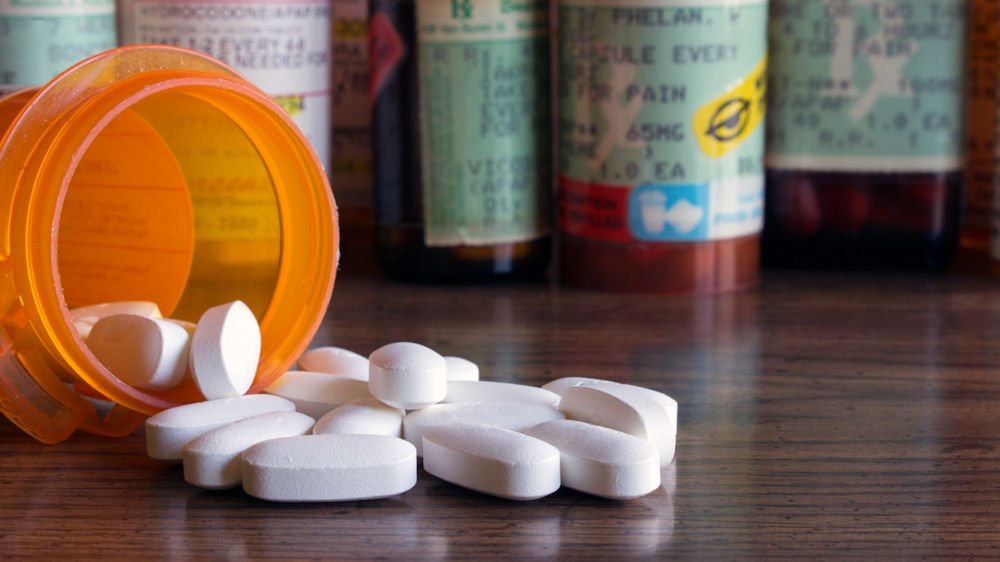Oxycodone, a prescription opioid pain medication, is widely used to manage moderate to severe pain. However, it also carries a high risk of misuse, dependency, and addiction. These drugs can be detrimental to one’s health, and their side effects have proven to be deadly.
So, how long does Oxycodone stay in your system? Recognizing the signs and symptoms of drug addiction, as well as, how they affect the brain and body is crucial for those concerned about the risks and reasons behind someone’s addiction, including medical, personal, or legal reasons.
At Golden Gate Recovery in Marin County, California, we believe knowledge is power, and our comprehensive addiction treatment programs are designed to help men struggling with oxycodone addiction regain control of their lives.

Oxycodone is an opioid analgesic, often prescribed for conditions causing chronic or acute pain. It is available in various formulations, including immediate-release (IR) and extended-release (ER) tablets, often under brand names such as OxyContin or Percocet (a combination of oxycodone and acetaminophen). While effective for pain relief, oxycodone is also highly addictive, making it a controlled substance in the United States.
Opioids like oxycodone bind to receptors in the brain and spinal cord, altering the way the body perceives pain. This mechanism not only alleviates discomfort but also produces feelings of euphoria, which can lead to misuse and dependency.
Oxycodone affects the brain by activating opioid receptors, specifically the mu-opioid receptors, which are responsible for pain relief and euphoria. When taken as prescribed, oxycodone provides therapeutic effects. However, misuse or higher doses can cause:
Repeated use alters brain chemistry, making it increasingly difficult for individuals to function without the drug, a hallmark of addiction.
The time oxycodone remains detectable depends on the testing method:
These timelines can vary based on individual metabolism, the frequency of use, and other factors.
The time Percocet stays detectable in the body depends on the type of drug test used:
Percocet, a prescription medication combining oxycodone and acetaminophen, is commonly used to manage moderate to severe pain. Understanding how long it stays in your system is important for anyone using it, whether for medical reasons or during recovery.

The half-life of a drug refers to the time it takes for half of the drug to be eliminated from the body. For oxycodone, the half-life can range from 3 to 5 hours for immediate-release formulations and up to 12 hours for extended-release versions. Several factors influence how long oxycodone stays in your system:
The liver metabolizes oxycodone into active and inactive metabolites, then excreted through the kidneys. Impaired liver or kidney function can slow this process, prolonging the drug's presence.
This term refers to how widely the drug is distributed throughout the body. Oxycodone’s lipophilic nature allows it to accumulate in fatty tissues, extending its elimination time.
Individual factors also play a significant role:
While the terms “opiates” and “opioids” are often used interchangeably, they have distinct meanings:
Opiates are naturally derived from the opium poppy plant, such as morphine and codeine.
Opioids are a broader category, encompassing both natural opiates and synthetic or semi-synthetic drugs like oxycodone, fentanyl, and methadone. Both classes are potent pain relievers with a high potential for misuse and addiction.
To understand how to prevent or overcome addiction to prescription opioids like Oxycodone, it’s useful to know what causes Oxy addiction, the signs of addiction, and how Oxycodone addiction is diagnosed.
Oxycodone addiction often begins with legitimate use for pain management. Over time, tolerance builds, requiring higher doses to achieve the same effect. Factors contributing to addiction include:
Recognizing oxycodone addiction is crucial. Common signs include:
A healthcare professional diagnoses oxycodone addiction through a combination of:

Opioid Use Disorder (OUD) is a chronic condition characterized by the inability to stop or control opioid use despite harmful consequences. Symptoms include:
An OUD is treatable with a combination of medical intervention, therapy, and support.
Withdrawal occurs when someone dependent on oxycodone stops using the drug. Symptoms can range from mild to severe and typically begin within 8–12 hours after the last dose. They include:
While withdrawal is uncomfortable, medically supervised detox can significantly ease these symptoms.
An oxycodone overdose is a medical emergency. Warning signs include:
If you suspect an overdose, call 911 immediately. Administering naloxone (Narcan), an opioid antagonist, can reverse the effects of overdose and save lives.
Recovering from oxycodone addiction is undoubtedly a challenging journey, but with the right support, lasting sobriety is achievable. At Golden Gate Recovery, we understand the complexities of addiction and offer comprehensive treatment programs tailored specifically for men. Our approach focuses on addressing the physical, mental, and emotional aspects of oxycodone addiction to create a strong foundation for long-term recovery.
The first step in overcoming oxycodone addiction is detoxification, a process where the body clears itself of the drug. For many, this phase is intimidating due to the withdrawal symptoms that can accompany it. Common withdrawal symptoms include muscle aches, anxiety, nausea, insomnia, and intense cravings.
Golden Gate Recovery offers medically supervised detox in a safe and supportive environment. Our clinical team monitors each client to ensure their comfort and safety throughout the detox process. By managing withdrawal symptoms with care and expertise, we help clients transition smoothly into the next phase of their recovery journey. Detox is not just about cleansing the body; it’s about preparing the mind and spirit for the work of healing.
Breaking free from oxycodone addiction requires more than physical detox—it also involves addressing the psychological and emotional factors that contribute to substance use. Our addiction therapy services, such as Cognitive Behavioral Therapy (CBT) and Dialectical Behavioral Therapy (DBT), are core components of our treatment programs.
By incorporating these therapeutic modalities into treatment, we help clients build the skills needed to maintain sobriety and thrive in their daily lives.
For some individuals, Medication-Assisted Treatment (MAT) plays a vital role in their recovery from oxycodone addiction. MAT involves the use of FDA-approved medications, such as buprenorphine or methadone, to reduce cravings and alleviate withdrawal symptoms. These medications, when combined with therapy and support, can significantly improve treatment outcomes.
Our team carefully evaluates each client’s needs to determine whether MAT is an appropriate option. This personalized approach ensures that clients receive the most effective treatment for their unique circumstances.
Recovery from oxycodone addiction is not a solitary process. Support groups provide a sense of belonging and encouragement that is invaluable during and after treatment. Peer-led programs such as Narcotics Anonymous (NA) or other 12-step groups help clients connect with others who understand their struggles and share their commitment to sobriety.
At Golden Gate Recovery, we incorporate group therapy and encourage participation in community-based support networks. These connections foster accountability, reduce isolation, and create a strong support system for long-term recovery.
Golden Gate Recovery offers specialized detox and outpatient programs designed specifically for men. Our tailored approach addresses the unique challenges men face in recovery, fostering a supportive and understanding environment where they can grow and heal. From the initial detox process to ongoing therapy and support, we provide the tools and resources needed to help our clients achieve and maintain sobriety.
By choosing Golden Gate Recovery, you’re not just starting a treatment program—you’re joining a community dedicated to helping you reclaim your life. Let us guide you on your path to recovery and empower you to build a brighter, substance-free future.

At Golden Gate Recovery in Novato, California, we specialize in helping men overcome addiction and reclaim their lives. Our individualized treatment plans are tailored to meet each client’s unique needs, combining evidence-based therapies, holistic approaches, and a supportive community.
We understand the challenges of overcoming oxycodone addiction and are here to provide the tools, resources, and encouragement necessary for lasting recovery. If you or someone you love is struggling with prescription drug addiction, don’t wait—reach out to us today and take the first step toward a healthier, drug-free future.
Get confidential help! Call Us Now for:

Dr. Small’s professional experience encompasses General Psychiatry, Addiction Psychiatry and Family Medicine. As the founder of Headlands Addiction Treatment Services, Dr. Small and his team have become leaders in the delivery of addiction medicine and psychiatry to treatment programs throughout California and beyond. These compassionate services are reliable, responsive, personable, and evidenced based. Most of the team providers carry multiple board certifications in psychiatry, addiction medicine and family medicine. They recruit the best and brightest addiction medicine professionals to deliver the highest level of treatment.